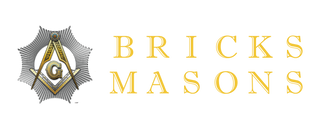
The flooring of Masonic Lodges is usually made of a mosaic pavement. A mosaic pavement consists of several stones of mixed colors joined together in a pattern to imitate a painting. Italians call this musaico while the French people called it mosaique. In English, it is called mosaics.
Some historians have it that Moses used a mosaic pavement for the flooring of the tabernacle. The Masonic tradition also corroborates this as it is believed that King Solomon’s Temple was decorated with a Masonic pavement consisting of black and white stones. There is no substantial evidence to actually support this. Some historians have it that the outside courts were also covered with the Mosaic flooring.
John 19:13 “When Pilate therefore heard that saying, he brought Jesus forth, and sat down in the judgment seat in a place that is called the Pavement, but in the Hebrew, Gabbatha.”
The word ‘pavement’ mentioned in the above passage is ‘Gabbatha’ in Hebrew. This is in the original Lithostroton which was used to connote a mosaic pavement by Pliny. The Greek and Hebrew words for this meant a pavement made with several ornamental stones which we now refer to as a Mosaic pavement. So, it is very likely that the mentioned part of the Temple was decorated with mosaic stones like a Mosaic pavement. In the Talmud, we were told that there is a Mosaic pavement in the Conclave where the Grand Sanhedrin held meetings.
In Masonic history, the floor has traditionally been a Mosaic pavement like that of the Temple. The mosaic pavement is a symbolism of the Masonic Order. The Masonic pavement is met with the rituals of the 18th century, and it is classified as one of the Lodge ornaments along with the blazing star and the indented tassel. The black and white stones represent good and evil.
INDENTED TASSEL
In Masonic Lodges of the 18th century, Lodge furniture consisted of the Mosaic pavement, the Masonic Blazing Star and the Masonic indented tassel or tarsel as it was called in the old days. The Masonic tassel also refers to a Tessellated Border. Some used this to signify a Trestle-Board.
In the French and English versions of the First Degree Tracing Boards, we have four tassels at each angle which are all connected to a cord that surrounds a tracing board. This makes up the true tessellated border. The four tassels that surround the tracing board refer to the four major points which are Pedal, Pectoral, Guttural and Manual. These points signify the four cardinal values of Justice, Fortitude, Prudence and Temperance.
Num 15:38 Speak unto the children of Israel, and bid them that they make them fringes in the borders of their garments throughout their generations, and that they put upon the fringe of the borders a ribband of blue:
Num 15:39 And it shall be unto you for a fringe, that ye may look upon it, and remember all the commandments of the LORD, and do them; and that ye seek not after your own heart and your own eyes, after which ye use to go a whoring:
The indented tassel is a sign of beautiful tessellated skirting or border that surrounds the ground floor of King Solomon’s Temple.
It is called "die Schnur von starken Faden," by the Germans which means the cord of strong threads. The Germans describe it as a border that surrounds the tracing-board of the Entered Apprentice degree with a cord tied in a lover’s knot and has a termination of two tassels at both ends.
It is also called "la houpe dentelee," by the French people which is a cord that forms true-lover knots and surrounds the tracing-board.
The tessellated border consists of 60 threads in Ancient Masonic jurisdictions as some lodges were not allowed to have more than 60 members in those old days.
In America, the tessellated border is not seen as a cord. Instead, the tessellated border is a decorated part of the Mosaic pavement, and it is made of small square stones.
SYMBOLIC MEANING OF THE MASONIC PAVEMENT
The Masonic Pavement is a symbol of the fraternal bond that unites Freemasons. In French Masonic ritual, the Masonic mosaic pavement teaches Freemasons that they are part of a society that surrounds the earth and that the cords that bond Freemasons together should be tighter.
The Masonic pavement is a symbolism of the care of providence that surrounds us and keeps us protected while we live our lives uprightly as guided by the four cardinal values of justice temperance, prudence and fortitude. It is a symbol of the comforts and blessings that surround us and a teaching that we should rely on the Divine Providence of God.

4 commenti
Vincent
People can change , spirits not. The symbols refers to the unchangeable , the invariants at the lodge and/or out for the good. Who is good? It’s not about physical colour.
People can change , spirits not. The symbols refers to the unchangeable , the invariants at the lodge and/or out for the good. Who is good? It’s not about physical colour.
Danny Odom
Thank show me this message
Thank show me this message
George Stone
Very informative, Thanks
Very informative, Thanks
Antônio Conde
.:
.: